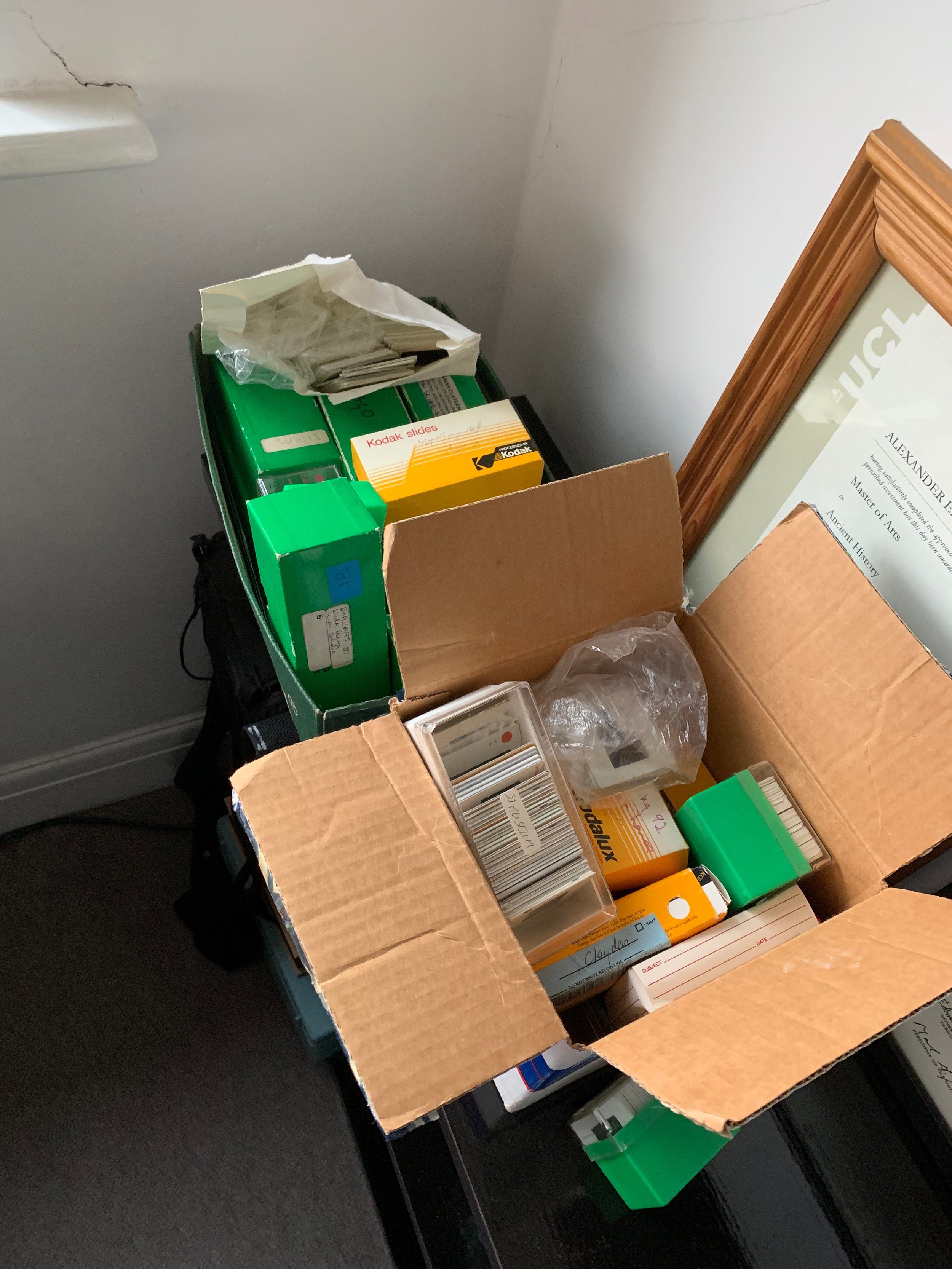The wise man knows that he knows nothing…
I began to tackle the first of the cardboard boxes full to bursting with slides, and like Odysseus have only started to appreciate the magnitude of my journey too late. I am not dissuaded. To help me digitize the mountain of slides I bought a (wait for it) slide digitizer called a Plustek 8200i. The internet said that was the best one that didn’t cost a king’s ransom to buy. It arrived and I got stuck in.
The mountain of slides I brought back from the US, about 25% of what was rescued from the Big Move, can be seen on the left here.
Even committing the slides to digital copies has proved an intriguing challenge, and I’ve been grateful for good ideas as I’ve gone. How do I track each slide and what it shows without having to eyeball it each time? How do I futureproof my organisation so that it’s easy for me to present content online, but also to change later down the line? What is relevant information and what is superfluous and a waste of time?
As with so many things, we fall back on what we know to help us solve new problems. For me, that’s tech. I work with JavaScript Object Notation (JSON) files almost every day for my day job, and know them reasonably well. They’re flexible enough to accommodate future changes if I want to make them, and infinitely customisable.
So a JSON it was, and I began the process of trying to create a template and find a workflow for working through slide boxes that wasn’t overly arduous. I failed, several times. I’m still failing. My first attempts to just update everything by hand by copying/pasting were successful but very long-winded. It took about 3 hours to work my way through a single box of slides. I have at least 40 here. Something had to be done.
So the tactic changed again, to combine my knowledge of Python with the realities of what the slide software could produce. This worked to marginal effect but is still wickedly error-prone and created almost as many problems as it solved. There’s the famous XKCD comic where one assesses how long something takes to simplify vs how long it actually just takes to do the slow way.
I wish I had any kind of intelligent answer as to where I fell on that graph but the whole thing is an interesting experiment and good practice, if not thing else.
This is where a measure of confidence ended, and the looming reality of my utter ignorance of the worlds of art, fashion, design, textile, and couture catches up to me. I know next to nothing about all these things, and while I’m a quick study this is a crash course. Is the model wearing silk or felt? Is it jacquard-woven or devoré? How did Marian achieve that particular pattern? Was it stitch or clamp resist? Was the fabric dyed or dyed and discharged?
These questions may have easy answers and I’m learning as I go, but the biggest question is: what am I not even asking? What seemingly obvious aspect of fashion, textile, and design escapes my notice because of my complete lack of training? Only time will tell. I remain grateful to everyone helping me along this path for their patience in explaining what to them must be the equivalent of 2+2=4. I remind myself that it takes toddlers years to master that, and I’ve only been doing this for about 16 weeks. It doesn’t reassure me greatly.
If you’ve read all the way to the bottom here, then thank you. Your reward for your diligence is a little gallery of some of my favourite images scanned so far. I hope you enjoy them.










